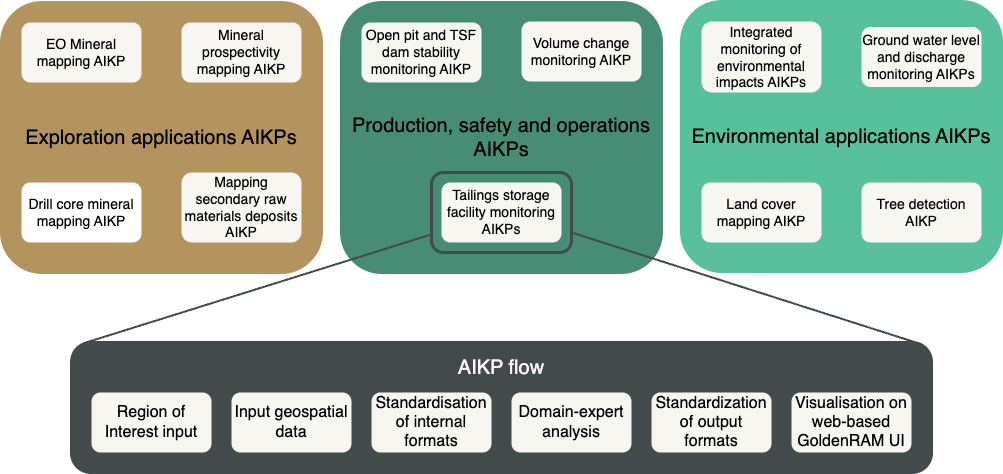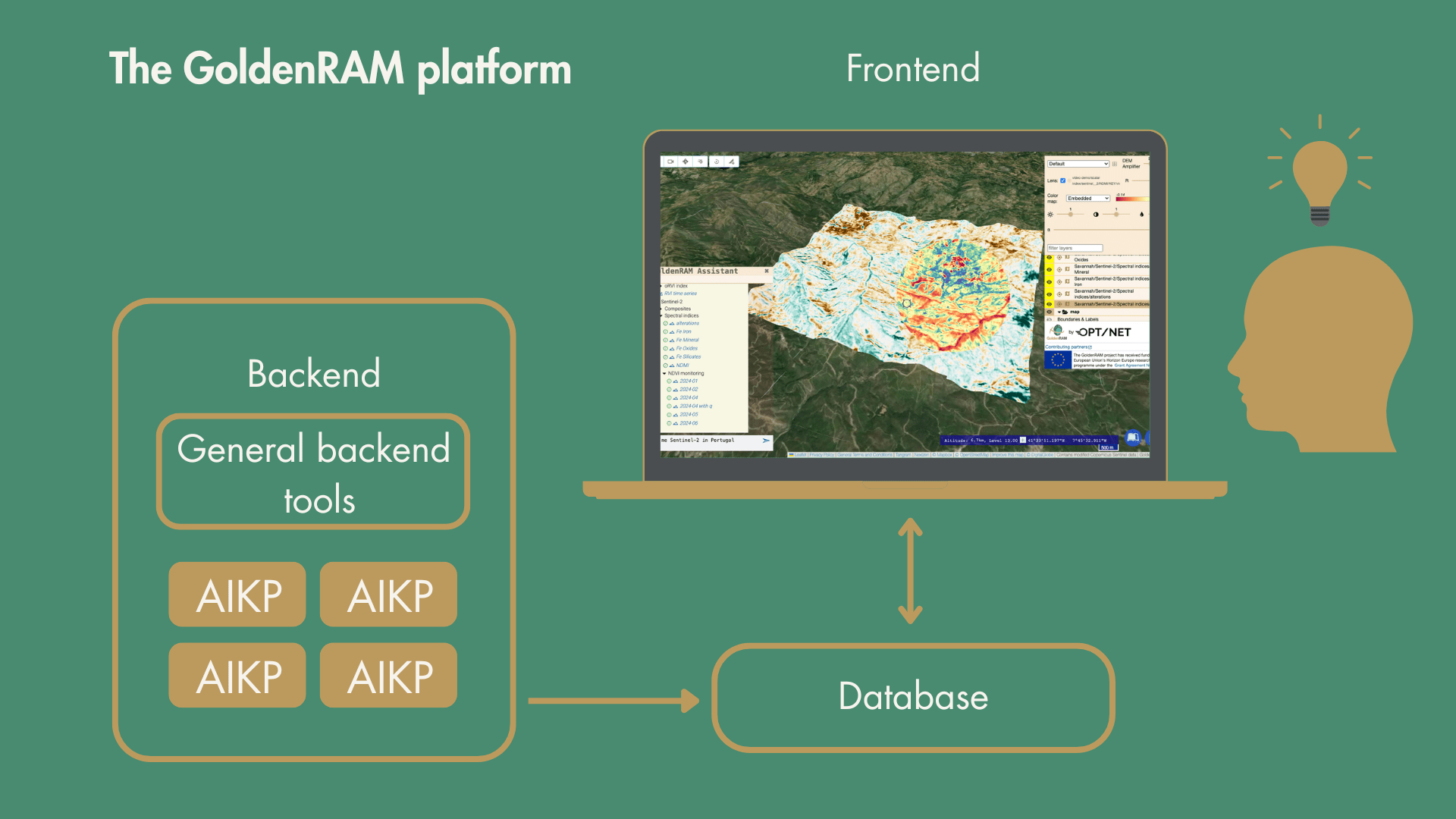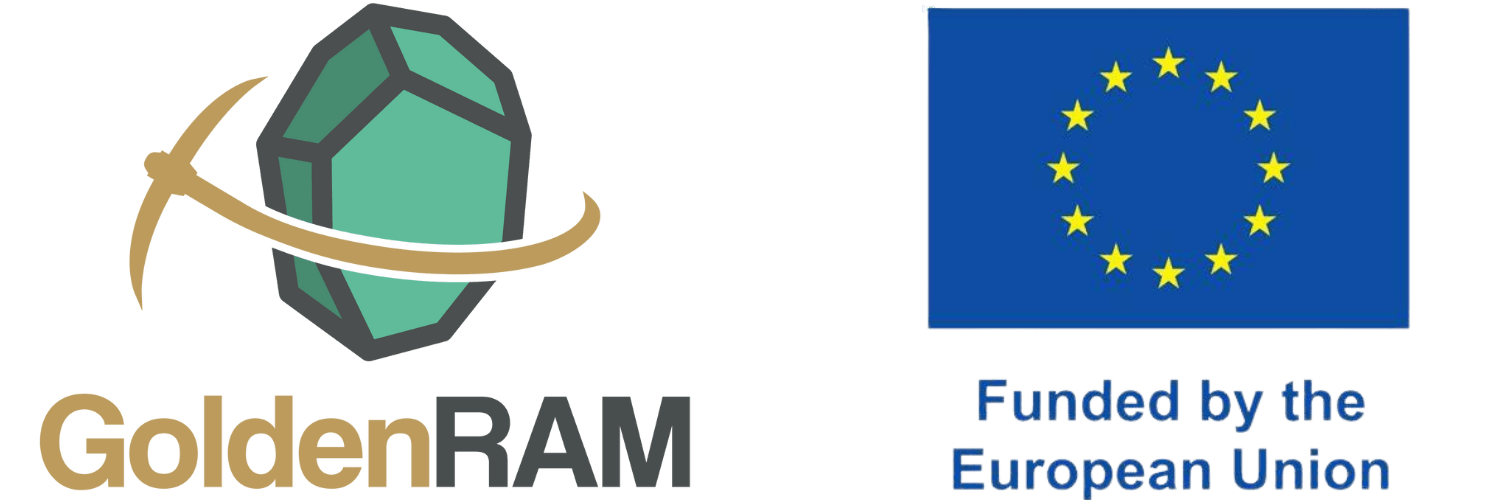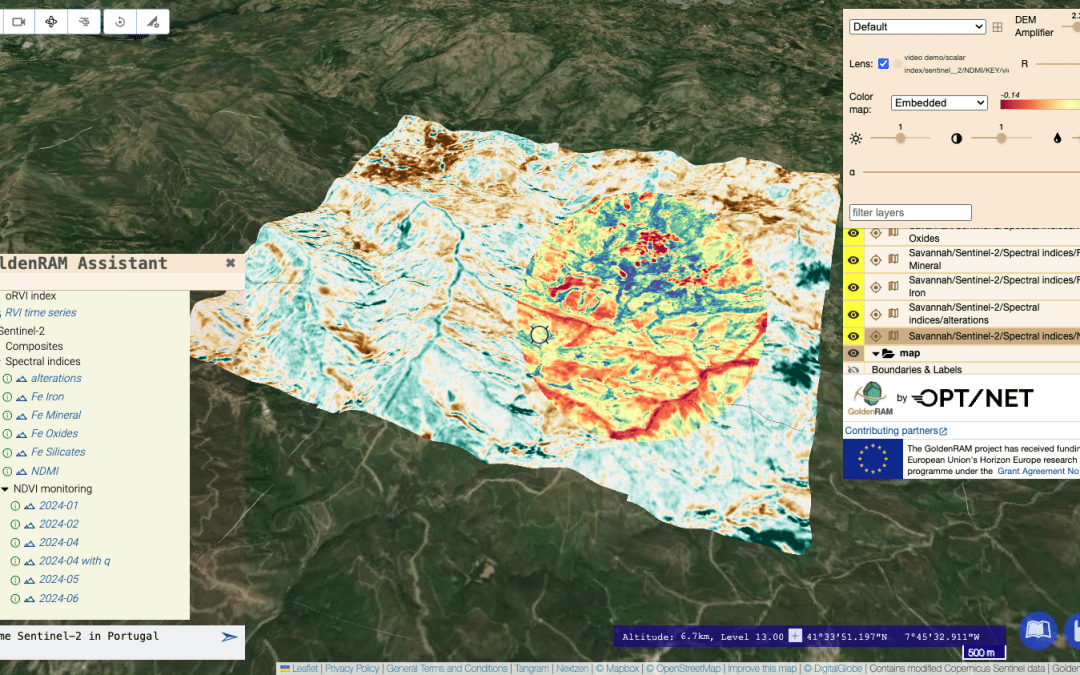The digital transformation of the mining industry has arrived, driven by the convergence of Earth Observation (EO) technologies and remote sensing data, cloud computing, and advanced Artificial Intelligence (AI). At the heart of this evolution, the consortium pioneered a new GIS application development approach which is based on the AI Knowledge Packs (AIKPs). This novel modular methodology aligns with GEO Knowledge Hub approach for creation and retention of the ‘know-how’ that simplifies creation of the complex computational workflows and brings actionable intelligence to the application’s users.
In the GoldenRAM project, AIKPs are not just another tech buzzword; they represent the effective method to bridge the human skill gap and efficiency when processing raw geospatial data and delivery of valuable strategic insights for decision-making in the exploration, monitoring, and sustainable management of critical raw materials. Below is an overview of the AIKPs under development and their intended applications.

The GoldenRAM project AIKPs under development
What Are AIKPs?
AIKPs, or Artificial Intelligence Knowledge Packs, are essentially modular packages that combine multisource geospatial data inputs, advanced AI/ML algorithms, and curated domain expertise into standardised automated workflows. In the context of the GoldenRAM project, AIKPs are designed to take as inputs the heterogeneous, multi-scale data from satellites, drones, and other remote sensing sources, process it using state-of-the-art machine learning and AI algorithms, and deliver outputs that are easily visualised and interpretable by industry stakeholders.
The Methodological Advantage
The beauty of AIKPs lies in their standardisations, modularity and scalability.

How the GoldenRAM platform works
AIKPs offer several key advantages:
- Simplification of Complexity: Mining operations involve numerous data sources, ranging from high-resolution satellite imagery to in-situ measurements. AIKPs can be built to streamline initial acquisition of these data streams by embedding domain-specific knowledge and automating data processing pipelines. This reduces the need for manual interpretation and accelerates the time from data capture to generation of timely actionable insights.
- Flexibility and Adaptability: Each AIKP is designed as a component of the platform that can be updated, reused, or tailored. It can be easily applied to a different Region of Interest by creating a task. Many tasks can be created and run simultaneously, whether for mineral exploration or environmental monitoring. The modular nature of AIKPs means that new functionalities can be developed rapidly without overhauling the entire system.
- Enhanced Decision-Making: By integrating domain expertise of different experts within pre-built standardised structure and tools, AIKPs empower the end users (who might not have the depth and breadth of expertise to create an end-to-end GIS workflow of application) to make informed decisions rapidly. AIKPs already support a wide range of applications, from predicting mineral prospectivity to monitoring the stability of the slopes at the mining sites, ensuring that each decision is backed by reliable, data and expert-driven timely insights generated automatically by running tasks in the GoldenRAM platform.
- User-Friendly Interfaces: GoldenRAM also leverages AI natural language processing to allow users to search for and interact with outputs of these AIKPs via simple, human-readable queries in web-based GoldenRAM UI. This natural language is compatible with the standard terminology and understands the categories of the different products, which greatly simplifies the user workflows.
Bringing satellite intelligence and AIKP-powered analysis into a clean, intuitive UI – designed to support researchers, decision-makers, and environmental strategists
By using a modular AIKP approach, the GoldenRAM project lays down best practices and standardisation protocols. This ensures that the innovative tools developed can be easily scaled or adapted to other regions and use cases within the mining industry and beyond.
Cover image: User friendly search for published datasets (output results of spectral indices AIKP based on Sentinel-2 optical images) with AI Assistant and Natural Language Queries on the GoldenRAM platform

